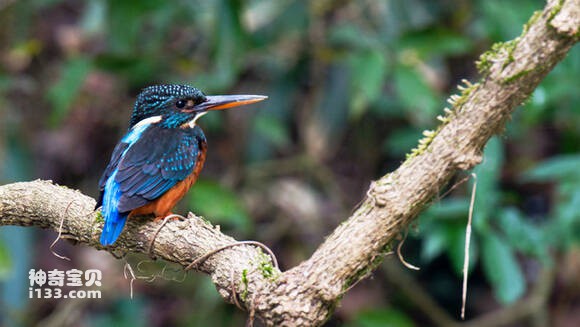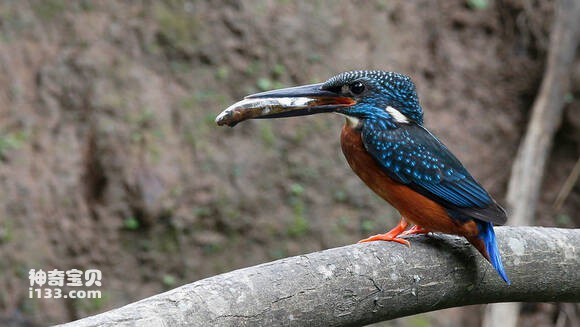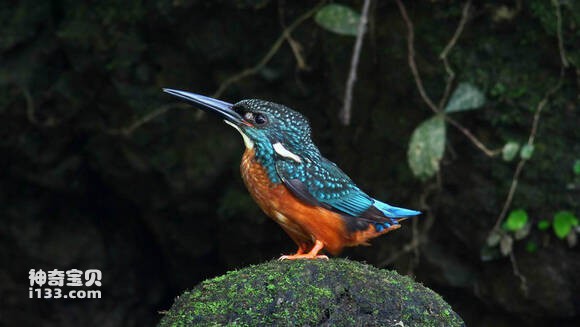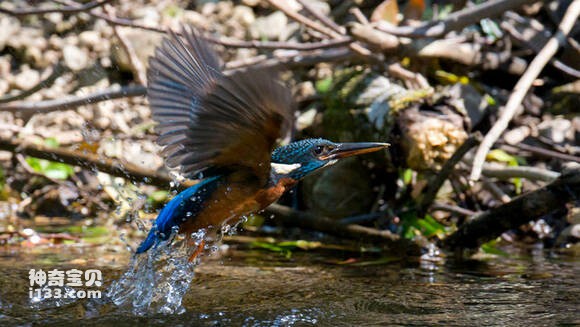Alcedo hercules
IUCN
LCBasic Information
Scientific classification
- name:Alcedo hercules
- Scientific Name:Alcedo hercules,Blyth's Kingfisher
- Outline:Climbing birds
- Family:Alcedomorpha Alcedoformes Alcedoidae Alcedo
Vital signs
- length:About 23 cm
- Weight:20-40g
- lifetime:2-5years
Feature
The Great Spotted Kingfisher is very similar to the Common Kingfisher, but is larger in size.
Distribution and Habitat
Distributed in Bhutan, China, India, Lao People's Democratic Republic, Myanmar, Thailand, Vietnam. Migrant bird: Bangladesh and Nepal. It is a resident bird in southeastern Tibet, southern Yunnan and Hainan Island in China.
It mainly inhabits forest river banks, tree-filled rivers, lowlands and small hills in low mountains and hills below 1,200 meters above sea level and foothill plains. Occasionally up to 900 meters above sea level.
Appearance
The forehead, top of the head, sides of the head, occiput and back of the neck are black with blue terminal horizontal spots and a bright light blue spot in the center. The eyes are black at first, and there are light brown or yellow spots near the front and under the eyes. The cheek and ear coverts are black with blue stripes; there is a white or light brown vertical stripe on the side of the neck. The middle part of the back and waist are a vivid light blue. The upper tail coverts are also bright blue, but darker. The tail is black with blue-green trim. The shoulders and inner secondary flight feathers are black with dark green stains. The upper coverts and flight feathers are black, and the inner flight feathers are decorated with blue-green; the minor coverts and middle coverts are black with bright blue spots, and the large coverts and outer flight feathers are black with blue edges. The chin and throat are white or the skin is yellowish white. The rest of the underparts, includin
Details
Blyth's Kingfisher is a resident bird. It is timid and often acts alone. It often lives on low branches of trees on the shore or branches extending out of the water. They often fly over the water to look for food. Usually they live alone on branches or rocks near the water, waiting for opportunities to hunt. Their food is mainly small fish, and they also eat crustaceans and a variety of aquatic insects and their larvae, and sometimes some plant food. After diving into the water, the kingfisher can still maintain excellent vision, because its eyes can quickly adjust the visual contrast caused by light in the water after entering the water. So it is very good at catching fish.

The call of the Great Spotted Kingfisher is similar to the call of the Common Kingfisher, but the sound is deeper.

The Great Spotted Kingfisher usually nests on earth cliffs, or on the embankments of fields and streams, using its mouth to dig tunnel-like caves as nests. These caves are generally not covered with bedding. The eggs are laid directly on the ground of the nest. Each nest lays 6-7 eggs. The eggs are pure white, shiny, slightly spotted, and about 28 mm x 18 mm in size. There are 1-2 nests per year. The incubation period is about 21 days. The male and female incubate the eggs together, but only the female feeds the chicks.

Due to the narrow distribution area of the species in nature, the lowland forests on which it depends for survival have been massively cut down by humans, and the habitat has been fragmented, causing the species to experience a decline in number. Therefore, it is listed as near threatened.

Listed in the "National List of Terrestrial Wildlife with Important Economic and Scientific Research Value" (Item 269) issued by the State Forestry Administration of China on August 1, 2000.
Listed in the "Red List of Threatened Species of the World Conservation Union" (IUCN) 2016 ver 3.1-Near Threatened (NT).
Listed in the second level of China's "National Key Protected Wildlife List" (February 5, 2021).
Protect wildlife and eliminate game.
Maintaining ecological balance is everyone's responsibility!








